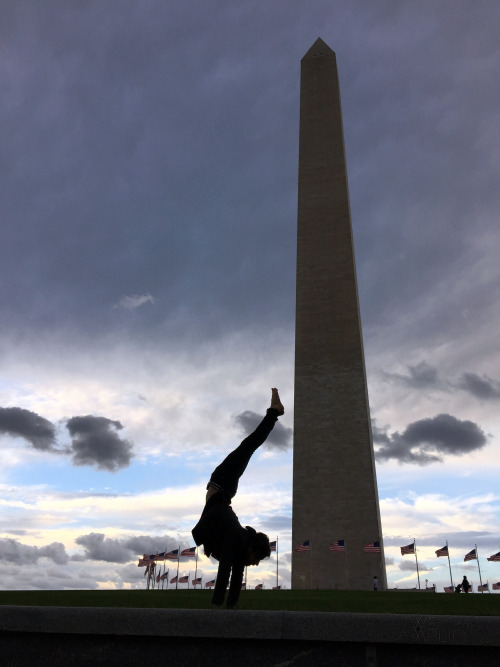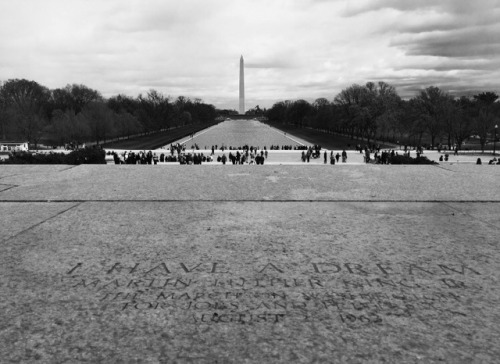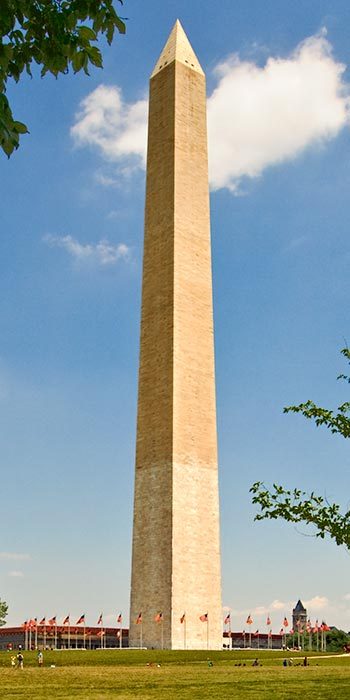#washington monument
1880-1884. “6. Photocopy of photograph (from the collection of the Smithsonian Institution) sometime between 1880 and 1884 unfinished shaft of monument – Washington Monument, High ground West of Fifteenth Street, Northwest, between Independence & Constitution Avenues, Washington, District of Columbia, DC." Historic American Buildings Survey/Historic American Engineering Record/Historic American Landscapes Survey, Library of Congress.
Post link
1909-1932. “Baseball game at old Griffith Stadium, Washington, D.C., view of spectators and one player on field." National Photo Company Collection, Library of Congress.
Post link
1935-1942. Untitled photo, unknown author. Farm Security Administration – Office of War Information Photograph Collection, Library of Congress.
Post link
Ten years ago today, a 5.8 magnitude earthquake rocked Virginia and Washington, DC, making a scary ride for the visitors at the top of the Washington Monument! The monument was closed for for repairs until 2014.
Post link
Handstand at the Washington Monument!
I live in Northern Virginia, so DC is only a few metro stops away. It’s rare that I actually go to the monument, so when I do obviously gotta pose off for it!
Post link
Peak geek culture is me on my Washington DC field trip getting super excited about seeing the Washington Monument because Spiderman had been there
I literally posted a video on my Instagram “we’re at the Washington monument! Where spiderman had once been!” And you can here me squealing
The Washington Monument is completed, despite new historical evidence that suggested George Washington was not, in fact, an obelisk.




Washington, District of Columbia









I wanted to take more photos but it’s so cold this morning.
Washington, District of Columbia
From where I stand
Tidal Basin, Washington D.C.
Missing DC right about now

It’s St. Patrick’s Day, and it has me thinking about a topic that’s been much discussed recently - immigration - because some of my ancestors were Irish refugees, fleeing the devastation of the Irish Potato Famine.
This was the era before immigration laws, so they didn’t come “legally.” They just came. Anyone who could buy a boat ticket could come to America in those days. Likely, they traveled on one of those miserable, over-stuffed ships of the era, where passengers bedded down on the deck itself or in the cargo hold between crates and barrels, wherever they could find a spot.
Some cities had their own immigration laws that prevented certain “undesirable” ethnic groups from disembarking, but for the most part, they just got off at whatever port of call the ship was destined for, looked for extended family or friends to help them get set up, and sought work.
It wasn’t easy. The Irish were despised by many, considered dirty and immoral, stealing jobs from native-born Americans. Worse, they were bringing their religion with them from the Old World, and there was a real concern that they were going to try to “take over” America for the Pope.
It needs to be stressed that the Irish were never slaves.
Life was hard for the Irish in America, but they still had personhood. Even Irish who entered into indentured servitude were never actually slaves. They were still considered people, and as soon as their contract ended, they were fully integrated into society as free persons with no stigma attached to their prior servitude. They were never able to be raped, beaten, or slain with impunity the way slaves were. They had the full protection of the law and right to redress in courts. They had property rights and their children did not inherit any condition of servitude.
Again, that doesn’t mean their lives were easy or that there wasn’t a systemic bias against them.
They were going to out-breed Protestants, people warned, and put the country under Catholic law. (My grandmother has told me about things her neighbor said about their fears that President Kennedy would “turn the country over” to the Pope as soon as he won election, so don’t think this is a belief confined to the dark ages of the Victorian era.)
The fear was so pervasive, it gave rise to its own political party, the Know-Nothings, who despised immigrants, but Irish Catholics in particular. It occasionally spilled over into violence, a church burned, a priest attacked, riots breaking out here and there, including one in Kentucky that killed over 20 people.
My ancestors made their way to Ohio, where they settled. I cannot say for certain, but it seems likely some of them got jobs building the Ohio-Erie canal, which bisected the state from Cleveland down to the Ohio River.
The work paid well, but it was brutal, backbreaking labor. The canal was dug with shovels and pick-axes - all three hundred plus miles of it. It was also dangerous. There was a saying that there was a “dead Irishman for every mile of the Canal.”
Their sons fought in the Civil War. At my family’s cemetery, there is a short row of Union soldiers. Their fortunes must have improved by the 1860s, because to transport a body home, you had to pay for it to be embalmed and shipped in a special casket; not everyone could afford that.
The Know-Nothings were still active. Their candidate had lost the prior presidential election (which is pretty much what they deserved for nominating Millard Fillmore. Sheesh.) Most of them joined the newly-formed Republican Party. Lincoln may not have been too happy about having them with him. He wrote to his best friend,
“As a nation, we began by declaring that ‘all men are created equal.’ We now practically read it 'all men are created equal, except [African-Americans].’ When the Know-Nothings get control, it will read 'all men are created equals, except [African-Americans] and foreigners and Catholics.’ When it comes to that I should prefer emigrating to some country where they make no pretense of loving liberty – to Russia, for instance, where despotism can be taken pure, and without the base alloy of hypocrisy.”
The Washington Monument still bears the scars of anti-immigrant hatred. Ever wondered why it’s two colors? It’s because of them.
Eliza Hamilton and Dolley Madison were two of the driving forces behind collecting funds for the memorial to our first president. But in 1855, a bunch of the Know Nothings caused the project to grind to a halt. The Pope had donated a stone to be used in the memorial, and they were very upset by that, being just about as anti-Catholic as they were anti-immigrant. They stole the stone and either smashed it to fragments, or threw it in the Potomac.
Congress appropriated $200K to finish the project, but the Know-Nothings arranged to seize control of the memorial association by rigging the election of its officers, and they weren’t about to hand that money over to those shady jerks. The Know-Nothings whined in their newsletter that they were being slandered in the press and that’s why public donations to the memorial fund were virtually nil. The the project went bust in 1855. The memorial was capped about a third of the distance to its present height.
In 1859, after the Know-Nothings lost all of their political power, Congress seized back control of the monument, but then the Civil War took priority. The building didn’t resume until the 1870s, and by then, they had to use stone from another quarry.
Today, depending on the light, you can see the color change starkly on the memorial. It’s a scar caused by ugly sentiments, and it should be a reminder to everyone who views it of the impact to our nation when those views are allowed to take root.
But even with the Know-Nothings gone, the nativist undercurrent remained. In the late 1800s, the nation banned Chinese immigrants, pretty much just because “there are too many Chinese people here.” Those were the first national immigration laws. More would soon follow, and before long, we had Ellis Island. America would no longer be a nation where anyone with money for a boat ticket could flee for a better life.
Back in Ohio, my people had quietly become “Americans.” Somewhere along the line, they became Protestants. They intermarried with other groups to the point where today I proudly refer to my ancestry as “American Mutt.” The only hint of the family’s Irish origins was their surname. I wonder what the original immigrants would have thought had they known there would one day be a holiday where “Everyone is a little Irish,” and people pinch those not wearing green.
Post link

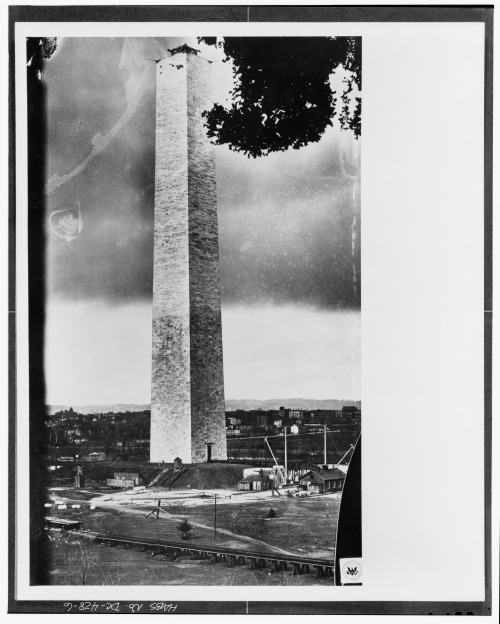

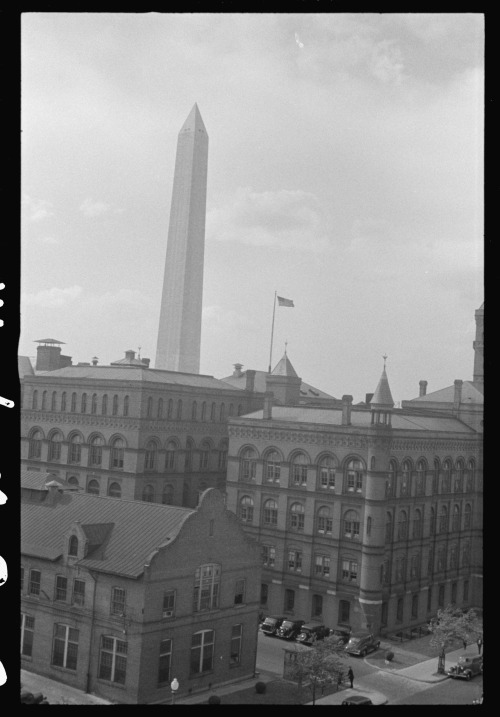
![[Washington DC] Home of the free, because of the brave. [Washington DC] Home of the free, because of the brave.](https://64.media.tumblr.com/7b1d65898a630e719e0468dd542932a5/tumblr_oqsbqpr6FL1r10mnco1_500.jpg)

